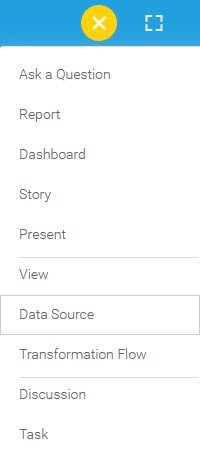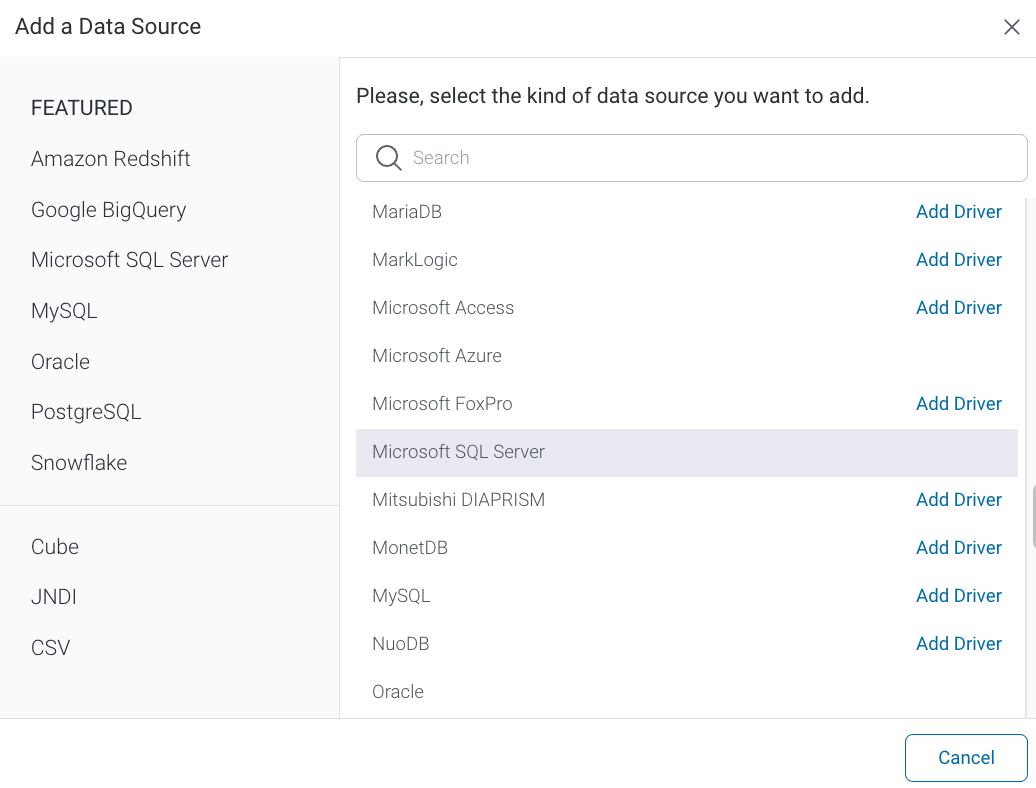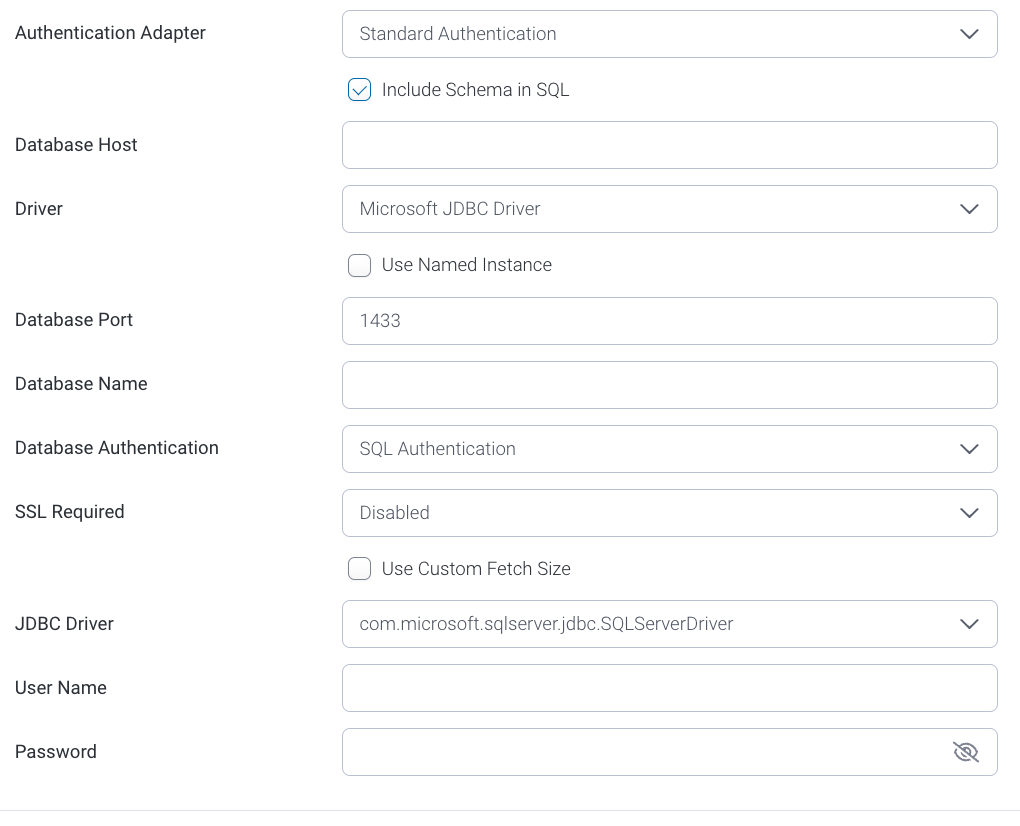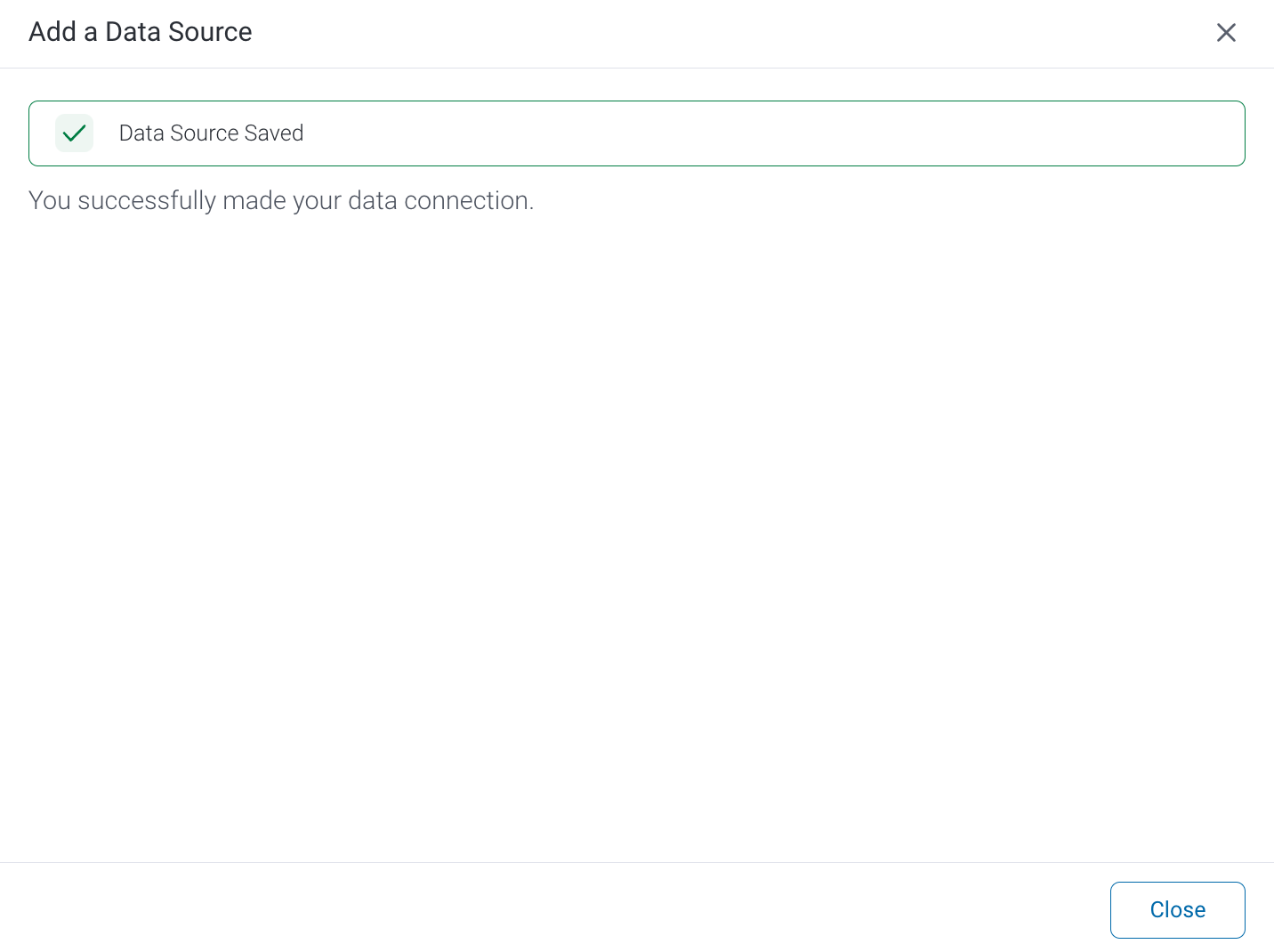Follow the instructions below to connect Yellowfin to a Microsoft SQL Server database.
1. Click on the Create button and choose the data source option.
2. Select Microsoft SQL Server from the databases list.
3. When the New Connection popup appears, provide a name and description for your database.
4. Connection String: when selecting Connection String you have the same functionality as in Generic JDBC Data Source.
5. Microsoft SQL Server configuration fields:
5. Select the Include Schema in SQL checkbox to include the schema name when addressing database tables in SQL queries.
6. Next, enter the name or IP address of the server hosting the SQL server database.
7. From the Driver drop-down list, select one of the two drivers available for the SQL server.
8. Next, specify if you want to create a default instance or a named instance of SQL Server. If an instance of Microsoft SQL Server is not already installed then a default one will be created, unless a named instance has been specified. To specify a named instance, first select the Use Named Instance checkbox, and then enter the name of the instance in the new field.
9. The default TCP/IP port number for the SQL server database will automatically appear.
10. Specify the name of the database containing the data that you require.
11. From the Database Authentication list, choose an authentication method for the database. On selecting the Windows Authentication method, you will need to provide the domain name as well.
12. From the SSL dropdown list, choose whether or not the Secure Sockets Layer should be enabled to encrypt data.
13. Select the Use Custom Fetch Size checkbox if you want a specific number of data rows to be retrieved from the database after a query is executed, rather than fetching its entire result. Then specify the number of rows in the Fetch Size field. Doing so will allow Yellowfin to process data faster.
14. The selected JDBC driver option appears based on your selection in step 7.
15. Enter the username and password of your SQL server database account.
16. Toggle Advanced Settings to see more settings.
17. Once you have completed your connection information, you will have several options:
- Back: This will navigate to the database selection.
- Cancel: This will close the New Connection popup.
- Test Connection: This will test the connection parameters you provided to ensure it can connect to your database. If the connection is successful, an indicator will appear and you will be able to save the connection.
- Save: This will allow you to save your connection and navigate to the Success page:












